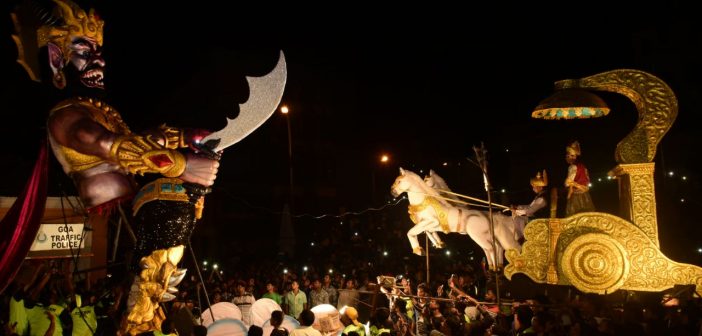Diwali, the Festival of Lights, is a time of joy and celebration throughout India, but in Goa, it takes on a unique character with the Narakasura parade. This event, held on the eve of Diwali, showcases the rich cultural heritage of the region while embodying the victory of good over evil through the symbolic burning of the Narakasura effigy.
The Legend of Narakasura
Narakasura is a demon king in Hindu mythology who wreaked havoc on the earth. According to legend, he was defeated by Lord Krishna, who split him in half using his divine weapon, the Sudarshan Chakra. Before his demise, Narakasura requested that his death be celebrated with lights and festivities, which is why the eve of Diwali, known as Naraka Chaturdashi, is marked by this unique tradition in Goa.
The Parade and Effigy Creation
In the days leading up to Diwali, local communities come together to create impressive effigies of Narakasura. This process involves creativity, teamwork, and a sense of community spirit. Participants—often local youth—discuss and finalize designs that reflect current events, mythological themes, or social issues. The materials used to construct these effigies include wood, hay, and sometimes even electronic components for added effects.
Effigies are often embellished with features like glowing eyes, articulated limbs, and elaborate outfits, making them larger than life. Some parades include thematic elements that resonate with contemporary issues or highlight cultural narratives.
The Festivities
The climax of the Narakasura celebrations occurs just before dawn on Diwali. The effigies are paraded through the streets on chariots, accompanied by cheers and music, creating a festive atmosphere. As midnight approaches, the effigies are set ablaze, producing a spectacular display of fireworks and a thunderous applause from the crowd.
This event not only serves as a source of entertainment but also fosters camaraderie among community members, bridging social divides. The burning of Narakasura represents the release of negativity and frustrations, ushering in the positive spirit of Diwali.
Unique Goan Sweets: Poha-based Delicacies
While the Narakasura parade is a significant highlight of Goa’s Diwali celebrations, the culinary offerings during this time are also noteworthy. Goans have a unique tradition of preparing sweets made from poha (flattened rice), which are both delicious and symbolize the abundance of the festival. Dishes such as Poha Ladoo and Poha Kheer are enjoyed during Diwali, setting Goan celebrations apart from those in other parts of India.
Conclusion
Goa’s Narakasura parade is a rich tapestry of cultural expression, combining mythological reverence, artistic creativity, and community spirit. It stands as a testament to the state’s unique identity and showcases how traditional celebrations can adapt to contemporary themes. For those seeking a distinctive experience during Diwali, the Narakasura celebrations in Goa offer an unforgettable glimpse into the vibrant local culture, merging the past with the present in a spectacular display of unity and festivity.
This year, as communities gather to honor this age-old tradition, they not only celebrate the triumph of good over evil but also reinforce their bonds, making Diwali a truly memorable occasion in Goa.





